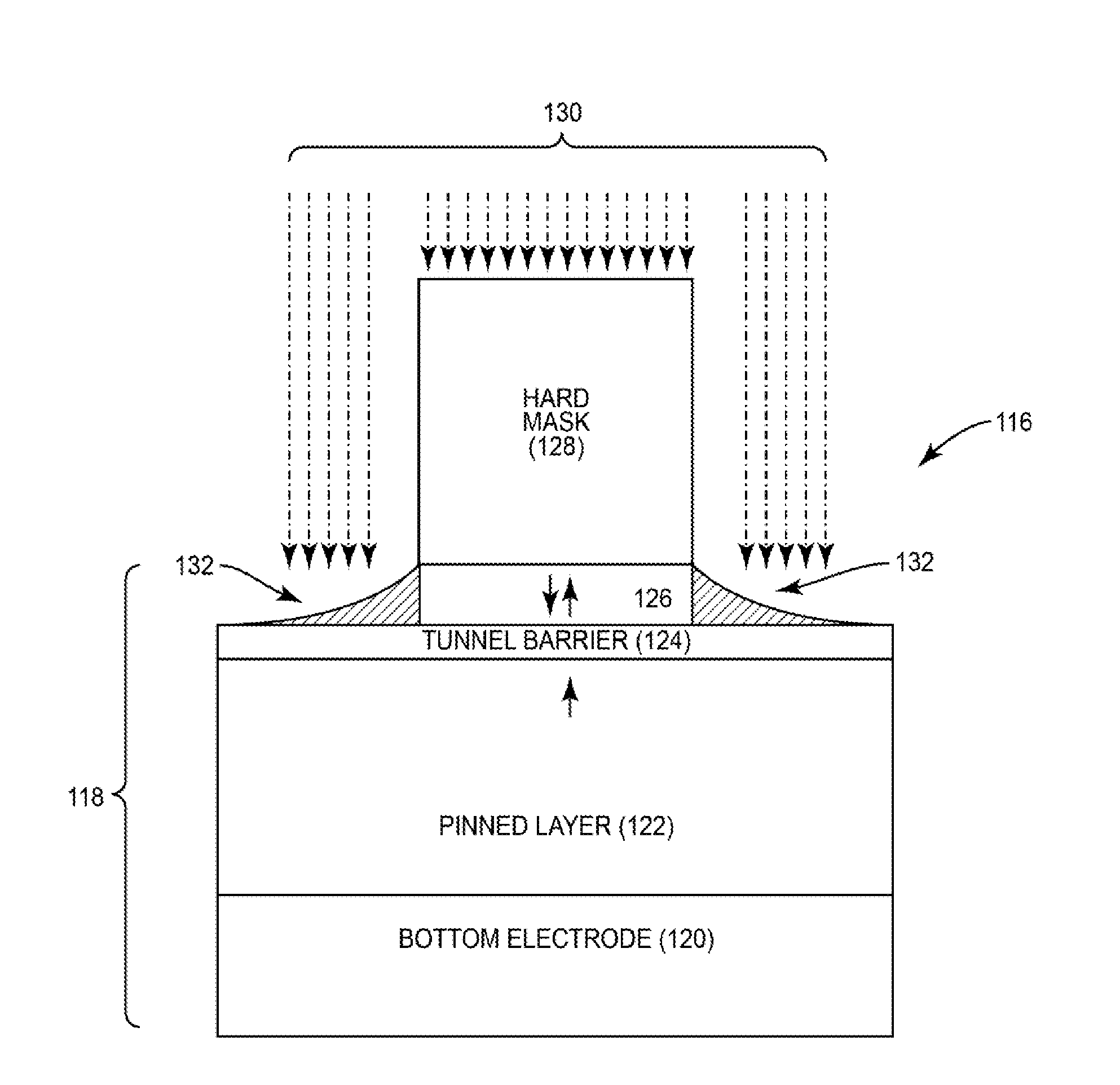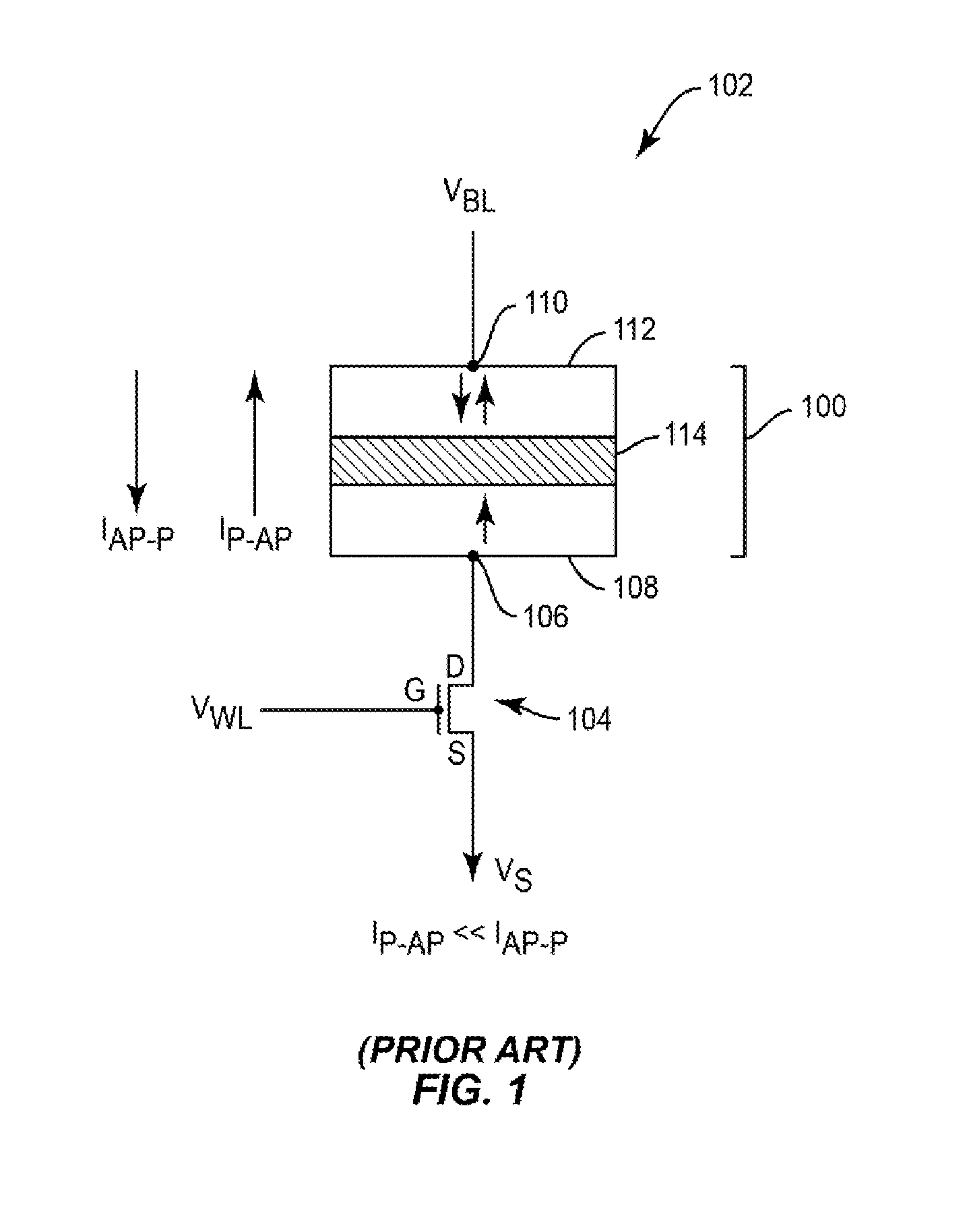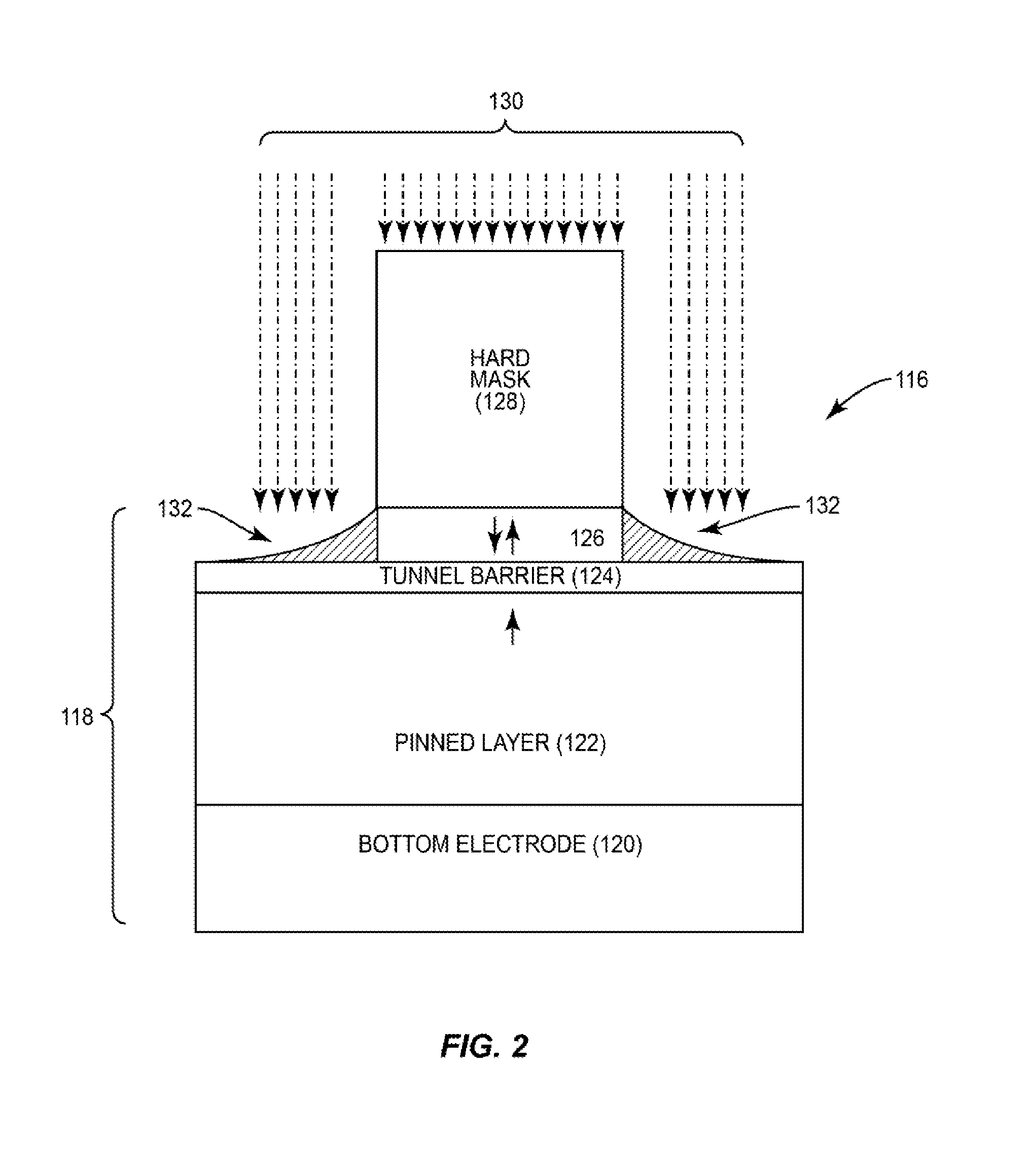Shadow-effect compensated fabrication of magnetic tunnel junction (MTJ) elements
a technology of shadow effect and fabrication, applied in the direction of magnetic field-controlled resistors, electrical devices, semiconductor devices, etc., can solve the problems of poor mtj performance, rie processes are known to create damage zones around the perimeter of mtj, and the stt-mtj has a large operational power consumption, so as to reduce the size of the free layer, and enhance the mtj operational margin
- Summary
- Abstract
- Description
- Claims
- Application Information
AI Technical Summary
Benefits of technology
Problems solved by technology
Method used
Image
Examples
Embodiment Construction
[0027]With reference now to the drawing figures, several exemplary aspects of the present disclosure are described. The word “exemplary” is used herein to mean “serving as an example, instance, or illustration.” Any aspect described herein as “exemplary” is not necessarily to be construed as preferred or advantageous over other aspects.
[0028]Aspects of the disclosure involve shadow-effect compensated fabrication of magnetic tunnel junction (MTJ) elements. Providing shadow-effect compensated fabrication of MTJ elements can provide reduced free layer sizing for enhanced MTJ operational margin. Related devices, methods, memory systems are also disclosed. Reducing the size of the free layer during fabrication of an MTJ allows less write current to write data to the MTJ, thus increasing write current operational margin of the MTJ. In certain aspects disclosed herein, to reduce the size of the free layer during fabrication of an MTJ to provide enhanced write and retention symmetry, ion be...
PUM
 Login to View More
Login to View More Abstract
Description
Claims
Application Information
 Login to View More
Login to View More - R&D
- Intellectual Property
- Life Sciences
- Materials
- Tech Scout
- Unparalleled Data Quality
- Higher Quality Content
- 60% Fewer Hallucinations
Browse by: Latest US Patents, China's latest patents, Technical Efficacy Thesaurus, Application Domain, Technology Topic, Popular Technical Reports.
© 2025 PatSnap. All rights reserved.Legal|Privacy policy|Modern Slavery Act Transparency Statement|Sitemap|About US| Contact US: help@patsnap.com



